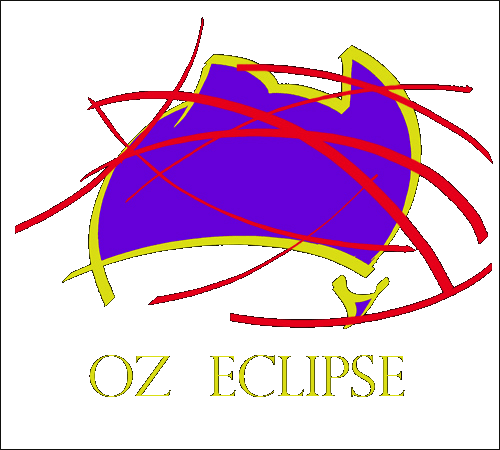
 |
WAITING FOR THE
SHADOW
SOLAR AND LUNAR ECLIPSE OBSERVING |
|
|
|
|
|
|
|
|
|
|
Welcome to "Oz Eclipse - Waiting for the Shadow." This is a new implementation and mark-up of all my solar eclipse material, old and some completely new material. People who know me will recognize many of the old photo's and stories. I've reorganized the material, keeping some as it was, changing some and completing or adding to others. I lauched my first web site in 1998. In 2003, my provider shut up shop and so did I. I was busy and just never got round to set it up again. Since then, my reports have been inconsistent. I didn't invest the time to write some up properly in online form. In everyday life, I don't even keep an appointment diary let alone a journal. Fortunately, I transform into an avid journal writer whenever I travel using long dead periods on buses, trains and planes to write my notes. So while working on Oz Eclipse, I went back to my notes and journals, spoke to the friends that I observed & travelled with and have written the reports and accounts retrospectively. One feature of this site is its focus on eclipses in Australia. In fact, the "Oz" in the name Oz Eclipse is derived from the Australian slang expression for refering to Australia and all things Australian. I work in the field of climate change research. In the course of my professional work, I have travelled by road over a great deal of the Australian continent. I've had the opportunity to travel to most parts of the continent both popular and remote. Australia experiences nine central solar eclipses in the 40 years from 2000 - 2040. I will attempt to provide detailed location and travel information for all eclipses on the Australian continent with a local perspective. The site logo is a stylised depiction of the Australian continent and the nine solar eclipse paths that cross it between 2000 and 2040. Like most people who observe eclipses, I've had many great collaborations with any number of people over the years. I consider that I've been very fortunate to meet a small number of people with whom I've enjoyed ongoing friendship and collaboration over many many years. My close friend, Greg Bond and I have collaborated on a wide variety of astronomical projects for almost 30 years. In Shanghai in 2009, we'll finally add a total eclipse to our list of collaborations.
|
In November 1994, I met Mike Gill in Bolivia. We became friends and we've stayed in regular contact ever since enjoying two eclipses together in 2002 and 2006. Bengt Alfredsson and I first worked together in Zambia in 2001. We've four eclipses soon to be five. We've become close friends in the process. I met Ernie Piini during the 1994 eclipse expedition. Though we've only managed to travel together the one time since, we keep in regular contact. The inspiration for building my custom eclipse equatorial mount came from seeing Ernie's three-way telescope back in 1994. Ernie produces an astronomy show for cable TV. After every eclipse, Ernie does an episode about the eclipse just passed and he has frequently used my stills in his productions. The internet has revolutionized communication between the world-wide fraternity of eclipse chasers. It makes communication with people a world away so easy. In Bolivia in 1994, I offered to exchange email addresses with people on the tour. Few people even knew what an email address was. Even Mike Gill, a computer programmer, obviously knew what an email address was but didn't have one. How the world has changed. Ten years ago, I asked Fred Espenak to generate a set of small increment path coordinates for the February 1999 annular eclipse so that I could plot them onto a detailed topographic map of the Geraldton area. I photocopied a 1:250k topographic map of Geraldton. I plotted the annular eclipse path onto it by hand and re-scanned it. I sent it back to Fred Espenak who put it on his web site for distribution. In retrospect it seems so primitive. The mapping resources that have opened up to us in the last ten years make eclipse planning so easy. World digital maps, Google Earth, Google maps, interactive javascript calculators that calculate local circumstances wherever you point the mouse on a map. Bengt and I are putting our 2009 expedition together as I write this passage. I made the comment in an email to him the other day, "How did we survive before Google Earth?"
Joe Cali [February 2009]
|